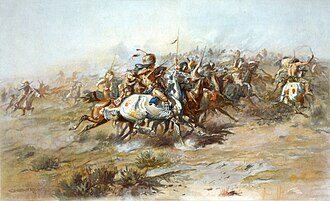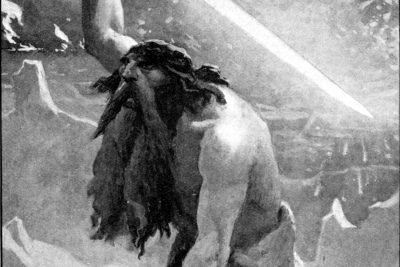
Custer and the Battle of the Little Bighorn: A Key Clash

The Battle of the Little Bighorn, also known as “Custer's Last Stand,” stands as one of the most iconic and studied battles in American history. Fought on June 25, 1876, this clash not only involved a fierce confrontation between the U.S. federal troops and Native American forces but also represented a significant turning point in the struggle for Native American rights and territory. As tensions escalated between the U.S. government and Native tribes, the failure of diplomacy and treaties culminated in this tragic battle, with Lieutenant Colonel George Armstrong Custer leading his troops into a disastrous ambush against the formidable forces of Sitting Bull. This profound event has left an indelible mark on the cultural memory of America, encapsulating themes of resistance, imperialism, and tragic defeat.
Understanding the context and implications of the Battle of the Little Bighorn requires an in-depth examination of its background, key figures, and the aftermath. In this article, we will explore the historical framework in which the battle occurred, delving into the people involved, the military strategies executed, and the long-term effects on both Native American communities and American policies. The legacy of this critical engagement continues to foster discussions about sovereignty, justice, and the narratives surrounding Custer and his fateful charge against great odds.
- Historical Context of the Battle
- Key Figures: Custer and Sitting Bull
- Prelude to Conflict: The Second Treaty of Fort Laramie
- The Course of the Battle: Strategies and Tactics
- The Aftermath of Custer's Last Stand
- Impact on Native American Resistance
- Legacy of the Battle: Commemoration and Remembrance
- Conclusion: Lessons Learned from Custer's Defeat
Historical Context of the Battle
The lead-up to the Battle of the Little Bighorn is intricately linked to the racial, economic, and political landscape of 19th century America. Following the discovery of gold in the Black Hills, a region guaranteed to the Sioux Nation by the Second Treaty of Fort Laramie of 1868, thousands of fortune seekers began moving into these territories, violating the treaty and escalating tensions. The U.S. government's failure to uphold its commitments placed enormous pressure on Native American tribes, leading to inevitable conflict.
In this precarious atmosphere, the federal government opted for military intervention. In response to Native American resistance to encroachment on their lands, Lieutenant Colonel Custer and his regiment from the 7th Cavalry were dispatched as part of a larger campaign to quell Native resistance in the Northern Plains. As Native American leaders like Sitting Bull organized their forces, Custer was oblivious to the growing numbers of his adversaries, assuming that his experienced crew could handle any indigenous uprising.
Key Figures: Custer and Sitting Bull
Two central figures emerge from the Battle of the Little Bighorn: George Armstrong Custer and Sitting Bull. Custer, often remembered as a daring cavalry officer, rose to fame during the Civil War and built a reputation for being both ambitious and reckless. His notorious military career was characterized by bold, sometimes hasty decisions that frequently positioned him at the forefront of conflict.
Conversely, Sitting Bull was a revered spiritual leader and chief of the Hunkpapa Lakota Sioux. His inspirational leadership united various tribes against the encroachment of U.S. forces, embodying resistance and resilience. He was not only a tactician but also a symbol of Native American identity during a period when their culture and livelihoods were under constant threat. The strategies utilized by these two leaders diverged significantly, ultimately playing a key role in the outcome of the battle.
Prelude to Conflict: The Second Treaty of Fort Laramie
The Second Treaty of Fort Laramie, signed in 1868, promised the Lakota Sioux exclusive rights to the Black Hills and guaranteed their sovereignty over this crucial territory. However, the discovery of gold in 1874 prompted numerous settlers and miners to invade these sacred lands, leading to tensions that preceded the Battle of the Little Bighorn. The U.S. government, rather than enforcing the treaty, opted for an aggressive approach, culminating in military campaigns against the Sioux.
This treaty breach catalyzed a series of events that escalated conflicts, as Sitting Bull and other indigenous leaders began to organize their forces in direct defiance of U.S. encroachment. Custer's aggressive pursuit of these Native leaders was fueled by his ambition for glory and a desire to quell the burgeoning insurrection swiftly. Custer’s strategic overconfidence would play a crucial role in the subsequent disaster that unfolded.
The Course of the Battle: Strategies and Tactics
The events on June 25, 1876, at the Battle of the Little Bighorn showcased a clash of tactics and miscalculations. Custer, emboldened by a string of military successes, decided to split his forces rather than approach the Native camp with the full strength of the 7th Cavalry. This questionable decision left him with a vulnerable detachment consisting of approximately 210 men.
Sitting Bull and his warriors, on the other hand, had largely been united by a shared cause and purpose. While Custer underestimated the number and fighting capabilities of the Native forces, Sitting Bull’s strategic positioning and knowledge of the terrain significantly gave his forces an advantage. The Native American forces executed a coordinated attack that completely overwhelmed Custer's fragmented regiment. The battle's ferocity and the sheer determination of Sitting Bull's warriors would ultimately lead to a swift and devastating defeat for Custer.
The Aftermath of Custer's Last Stand
The aftermath of the Battle of the Little Bighorn was profound, not just for Custer and his troops but also for the U.S. government and Native American tribes. The loss inflicted by Native American forces resulted in a shockwave across the nation. This defeat was particularly difficult for the U.S. military, which faced intense scrutiny and pressure to avenge Custer’s death and quell Native resistance definitively.
In retaliation, the U.S. government mobilized more troops and resources, leading to more aggressive campaigns aimed at subduing Native tribes. Within months, the federal army had intensified efforts against indigenous resistance, ultimately resulting in a series of forced relocations and treaties that limited their sovereignty. While Custer's death became a rallying cry for American national unity, the consequences for Native tribes were long-lasting and traumatic.
Impact on Native American Resistance
The Battle of the Little Bighorn served as a catalyst for a broader movement against federal oppression and was pivotal in shaping Native American resistance in the years that followed. Despite the immediate increase in military pressure on indigenous tribes, the battle galvanized Native American identity and unity. Leaders like Sitting Bull became symbols of standing against colonial violence, encouraging solidarity among warriors and communities feeling the threat of imminent destruction.
In conclusion, while the battle resulted in a tactical victory for Sitting Bull and his forces, the following years revealed the brutal reality of U.S. policy towards Native Americans. Resistance continued in various forms, with leaders and tribes finding various ways to fight against oppression, even as they faced overwhelming odds.
Legacy of the Battle: Commemoration and Remembrance
The Battle of the Little Bighorn has left an enduring legacy in American history and culture, sparking countless narratives regarding the interactions between Native Americans and U.S. forces. Today, Little Bighorn Battlefield National Monument serves as a somber memorial for those who fought and died there. The site is not only a testament to Custer's military blunders but also an acknowledgment of the complex lives and cultures of Native peoples, who were defending their land and sovereignty.
Commemoration efforts have evolved over the years, shifting the narratives to honor the stories and perspectives of the Native American tribes involved. Events and education programs at the battlefield aim to educate visitors about both the historical significance of the battle and the ongoing legacy of Native American resistance. The duality of Custer's defeat and the valor of the Dakota and Cheyenne warriors symbolizes the ongoing struggle for recognition and rights.
Conclusion: Lessons Learned from Custer's Defeat
The Battle of the Little Bighorn epitomizes the complexity of American history, showcasing both the realities of military conflict and the stories of indigenous resilience. Custer’s defeat reflects not only the human costs of war but also the broader implications for Native American sovereignty and identity. The lessons drawn from this battle continue to resonate, reminding us of the importance of understanding historical legacies and honoring those who fought for their rights.
In closing, the memory of Custer and the battle prompts vital discussions regarding the treatment of Native peoples and the consequences of U.S. expansionism. Each retelling of this story encourages reflection on the past while recognizing the strength and resilience of indigenous cultures that persevere against historical injustices.
Did you find this article helpful? Custer and the Battle of the Little Bighorn: A Key Clash See more here Education.
Leave a Reply






Related posts